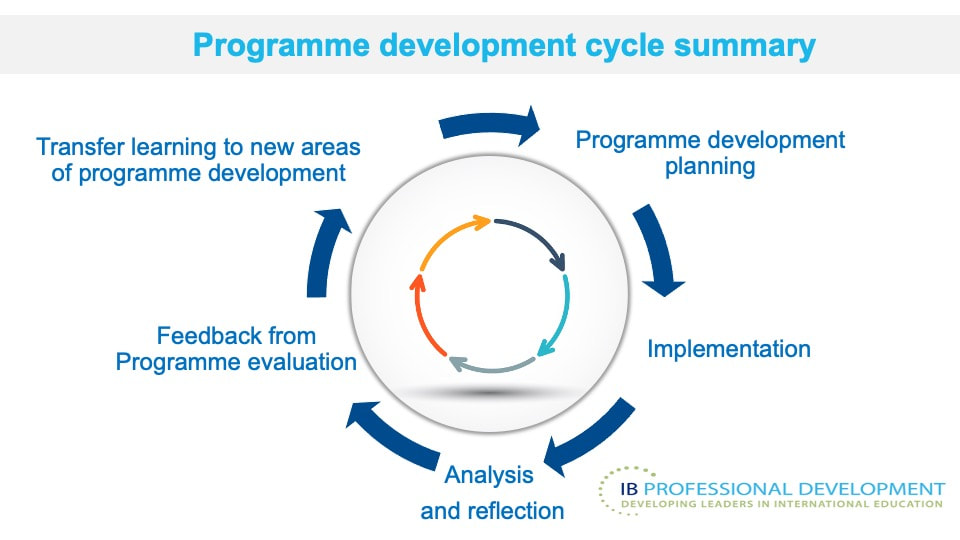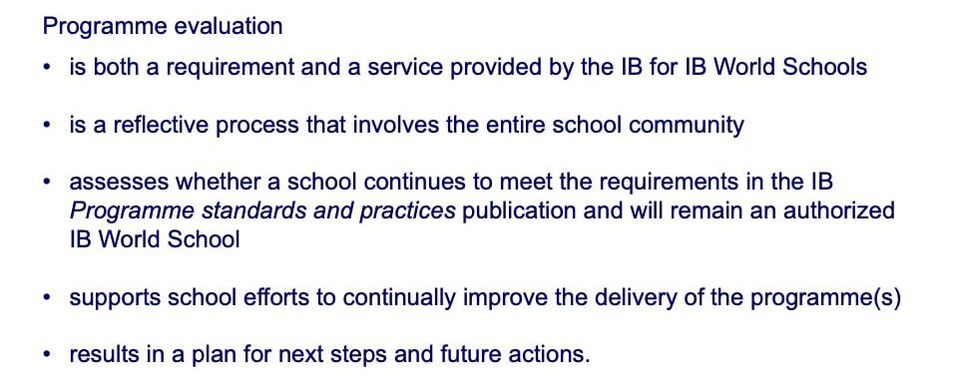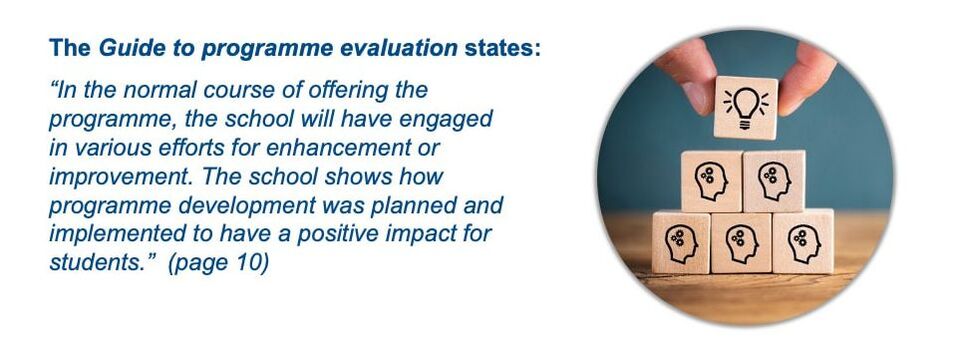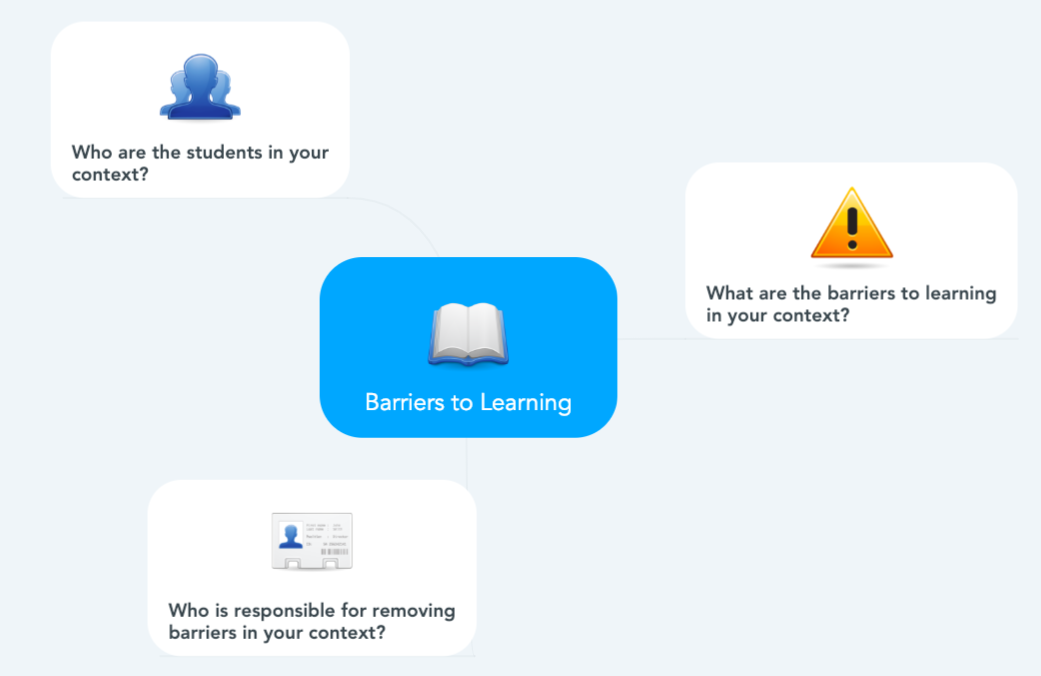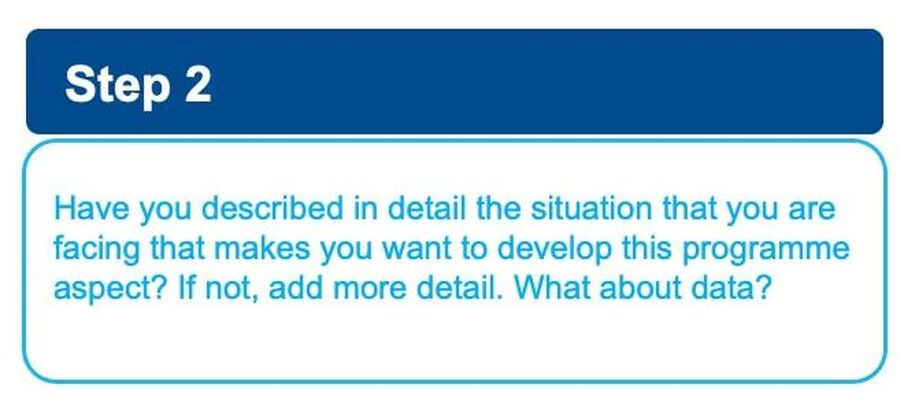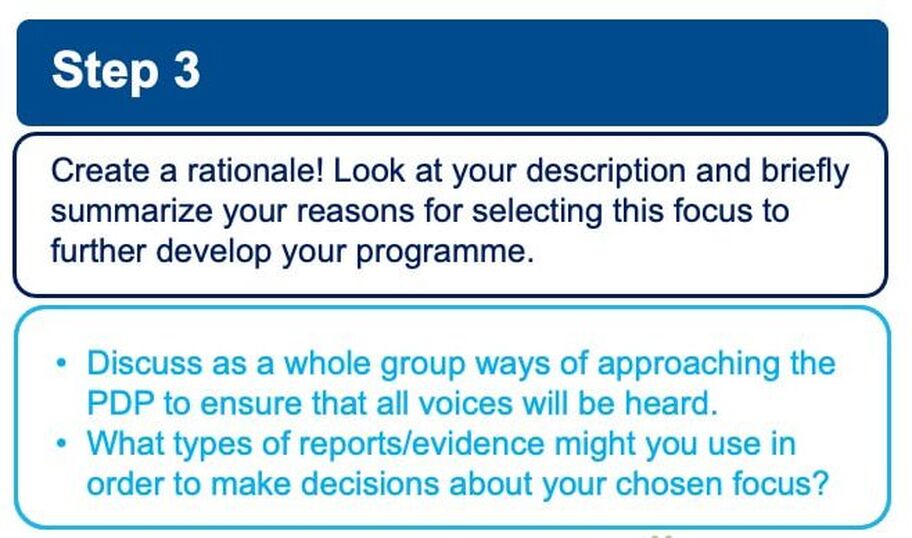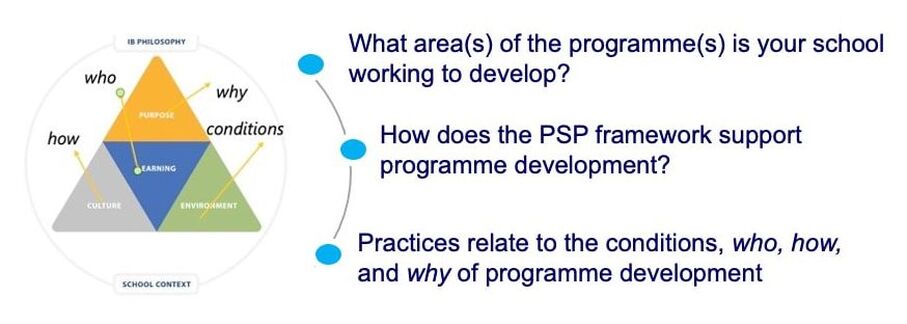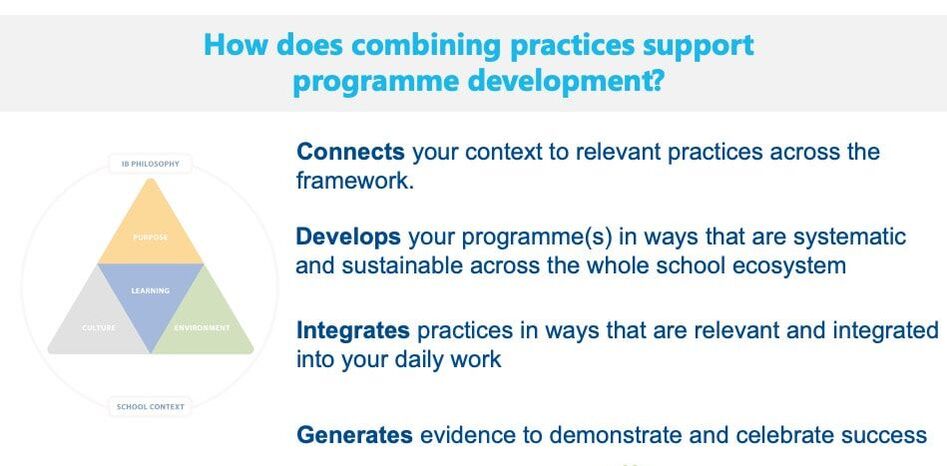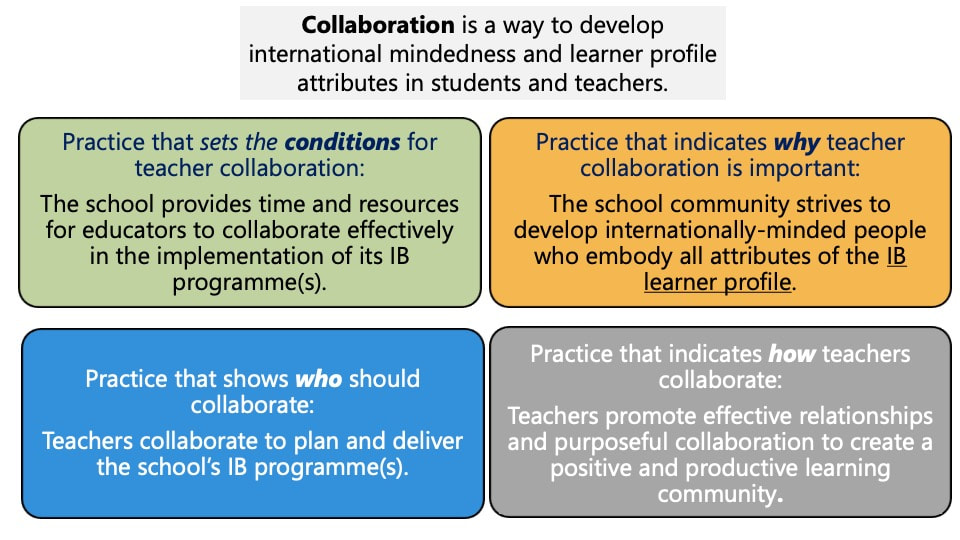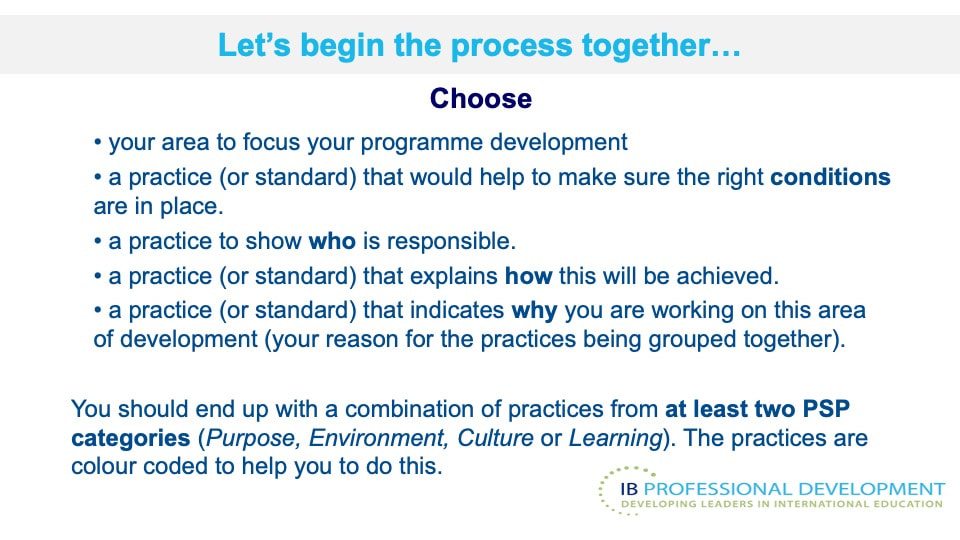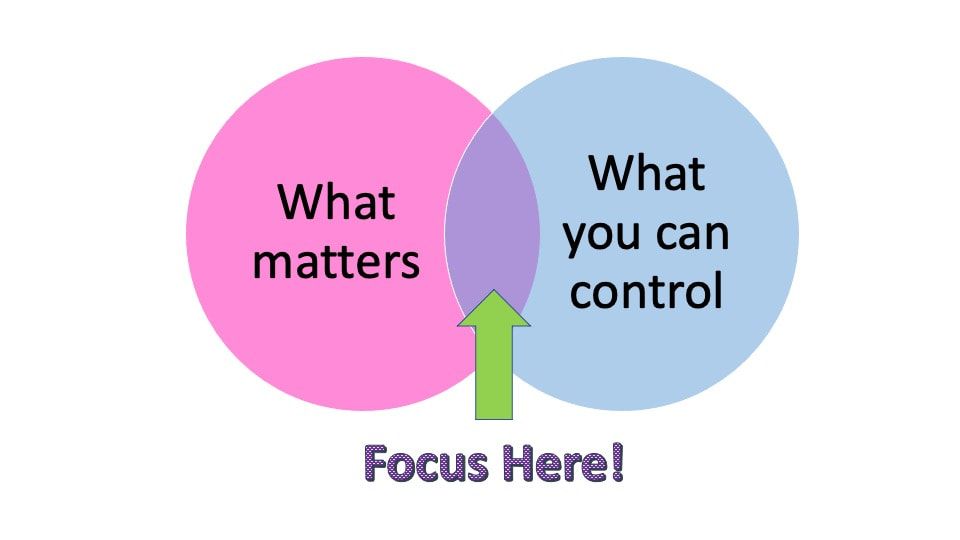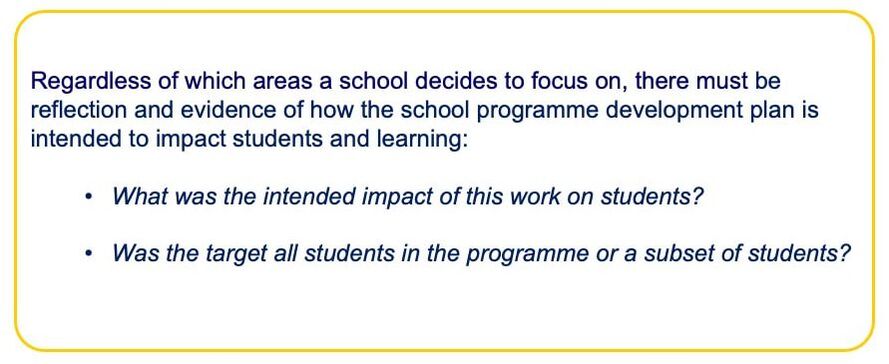WELCOME! |
Welcome!
Who's in the room?
Our purpose is to inquire into:
- the IB programme development process
- the connection between programme development and the MiCip .
- the influence of the IB standards and practices on whole school strategic development.
Previously...
|
Currently...
|
Evaluation Time-Frame
Schools are evaluated four years after authorization and every five years after authorization or the previous evaluation.
- The IB notifies the school approximately 18 months before the academic year in which the evaluation is scheduled.
- The school considers its school calendar and selects the date for submission of the self-study questionnaire which determines the preliminary review submission date and the window for the evaluation visit.
How might the IB Programme Development Process connect to the Michigan Integrated Continuous Improvement Process?
IB PDP Process• Assess Needs
• Plan • Implement • Monitor/Adjust/Evaluate • Reflect |
MICIP Process• Assess Needs
• Plan • Implement • Monitor/Adjust • Evaluate |
ESTABLISHING THE FOCUS
STEP ONE PDPWhat question does your school want to answer? What challenge might your school be facing?
What goal does your school want to achieve?
|
MICIPIdentify the Area of Inquiry: What area will you explore? You can only choose one.
Where might we find these areas in the IB PSP?
|
|
|
| ||||||
|
|
| ||||||
MICIP RESOURCES
IB IDENTIFYING BARRIERS
* A school should identify many areas they can develop further and prioritize. Schools are encouraged to develop more than one programme development plan even though only one is shared with the IB.
|
| ||||
The IB and IB World Schools always place learning at the center of everything they do. Learning includes student learning, professional learning of staff and organizational system learning. In an IB World School, this learning is informed by an IB philosophy and pedagogy that promotes individual agency, global citizenship and responsible action.
THE RATIONALE AND THE GOAL: HOW MIGHT WE...
PDPDuring programme evaluation, the school will be asked to evidence their planning, implementation, analysis, reflection and learning for one aspect of the programme. |
MICIP
|
Analyze Root Cause: Why are things the way they are?
|
| ||||
|
Our driving question was, “Why are students not meeting academic growth targets in math and ELA?” As a result of our root cause analysis using (the fishbone and/or the five whys), we identified ...
| pdp_template.docx |
An important step is to identify which IB practices are relevant to the area(s) the school has selected as the focus. Identifying a logical group of related practices ensures that a foundation is in place for successful
implementation. The following questions can help a school to identify relevant practices. Schools start by considering one or two practices for each question, remembering to include practices from at least two of
the four categories of the standards and practices framework (purpose, environment, culture and learning).
implementation. The following questions can help a school to identify relevant practices. Schools start by considering one or two practices for each question, remembering to include practices from at least two of
the four categories of the standards and practices framework (purpose, environment, culture and learning).
- What makes it possible for the school to begin its area of development?
- Who are the people largely responsible for creating and maintaining the school’s area of programme development?
- How does the school create activities and opportunities to fulfill the area of programme development?
- Why will the school implement the area of programme development?
ANALYZING, MONITORING, AND ADJUSTING
Define End and Interim Target Measures
- How will you know if you have achieved your goal?
- What is/are your end target(s) aligned to one of your data objects?
- When will you accomplish this?
- What interim targets will you measure along the way to ensure that you meet your end target(s)? On which dates?
Select a Strategy/Strategies and Identify Strategy Details
Identify Activities: What will you do to implement and monitor the strategy(ies)?
- Who will be responsible for it?
- When will it start?
- What is the due date?
Select Strategy Funding Options: How will you pay for the strategy/activities?
